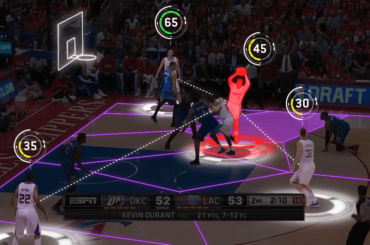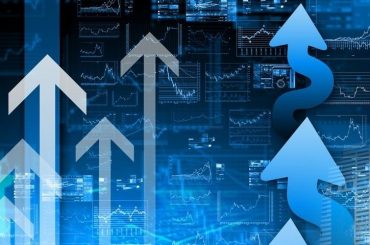Alteryx and Tableau are two of the best known software products in the world of analytics. Both are used in many companies to obtain valuable insights from data. But what role does each of these products play in an organisation? Do the two products compete with each other or complement each other? And should you be using either or both in your company?
What does Alteryx do?
When you’re analyzing data, you’ll often spend a considerable amount of time preparing the data for analysis. You may need to obtain data from multiple different sources, change the format of the data in some way, combine data sources together, and other such tedious tasks.
Estimates of exactly how much time a data analyst spends on data preparation vary considerably, but there’s no doubt that it can take up a significant proportion of your time.
This preparation process is sometimes called ETL, which stands for Extract, Transform and Load, and it refers to all the tasks needed to get data into a suitable format for analysis.
Alteryx is a leading software tool for making the ETL process easier. It provides a vast array of tools for processing data sets. It lets you import data from a wide variety of sources, process it and get it ready for further analysis. The number of tools is far too vast to discuss here, but suffice to say, it will include virtually any task you can think of involving data processing.

Alteryx also provides advanced statistical capabilities, including spatial tools and predictive analytics. After transforming your data, you can use Alteryx to run various advanced analyzes such as time series forecasting or predictive analytics that will give you deep insights into your data.
What does Tableau do?
Tableau fulfills a different role in the world of analytics software. Tableau is best known as a data visualization tool. It turns data into compelling charts and dashboards, which let you uncover the insights that are contained in your data.
The range of charts that can be created through Tableau is vast, and because Tableau has been a leader in the visualization area for many years, the look and feel of the charts has been refined to a high degree. When used well, you can be confident that Tableau visuals will have the greatest possible impact on your audience.
In effect, if Alteryx exists to make the tedious part of data analysis easier, then Tableau exists to make the exploratory part of data analysis both easy and enjoyable.
Can you combine both tools?
As you might guess from the above discussion, Alteryx and Tableau can often be used together. You could easily import raw data into Alteryx, process it there and then export the transformed data into Tableau to create charts and dashboards.
Alteryx and Tableau complement each others strengths and weaknesses well. While Alteryx is excellent at getting data into a usable format, it has a limited ability to visualize or otherwise show off your data to an audience. Tableau fills this gap effectively.
Tableau visualizes data excellently, but is less strong in the area of data preparation. While it does let you blend and merge data sets together, there are many features, in particular in the area of advanced analytics, where Tableau is lacking compared to Alteryx.
Who uses these tools?
The best thing about both Alteryx and Tableau is that they are straightforward to use, even if you don’t have any advanced technical skills. Both products have simple drag and drop interfaces which are easy to use.
In Alteryx, you create a workflow that processes data in a sequential order. You create the workflow by dragging tools onto a canvas. Similarly, Tableau lets you build up charts by adding dragging the different fields to be used to specified areas. In short, you can understand the interface of either tool fairly easily. As a result, you will find that Alteryx and Tableau can both be used by data analysts with varying degrees of expertise.
So what companies use the products? Alteryx and Tableau are both relatively expensive products. Alteryx is a large and comprehensive ETL product, and is priced accordingly. Tableau has been the market leader in visualization for many years, and this is also reflected in the price. Companies that use the two products tend to be larger than the average company. These companies have the most data to analyze, and the most money to spend on analytics, making these two products a good fit.
For smaller companies, cheaper solutions, such as Power BI in the visualization space, may be preferable. While the functionality might not be quite on a par with Tableau yet, the low price point can compensate for the differences if money is an issue.
Alteryx, however, does not have any obvious alternatives. There are no real competitors which can match the functionality of Alteryx while also having a lower price point. When looking for a cost effective alternative, businesses typically rely on R and or Python, however, these are coding languages which demand a much higher skill level than Alteryx.
What is their market position?
Alteryx and Tableau are both the leading tools in their area of the analytics market. This comes from the benefit of many years of experience and development in their fields.
As leaders, both products are being pursued by many challengers. Tableau in particular is being challenged by Power BI, developed by Microsoft. However, for now Tableau and Alteryx remain slightly ahead of the competition. As both products offer subscription pricing, you could easily switch if you felt one product was slipping behind competitors in the future
Conclusion
Tableau and Alteryx are both leading products in their areas of analytics. Alteryx primarily deals with data preparation and Tableau primarily deals with data visualization. As a result, the products complement each other well, and there is no reason why you could not use both in your business
Their pricing models mean they won’t be the right choice for every business, but if you want or need the best products out there, you’re unlikely to go wrong with these two in the current market place.








